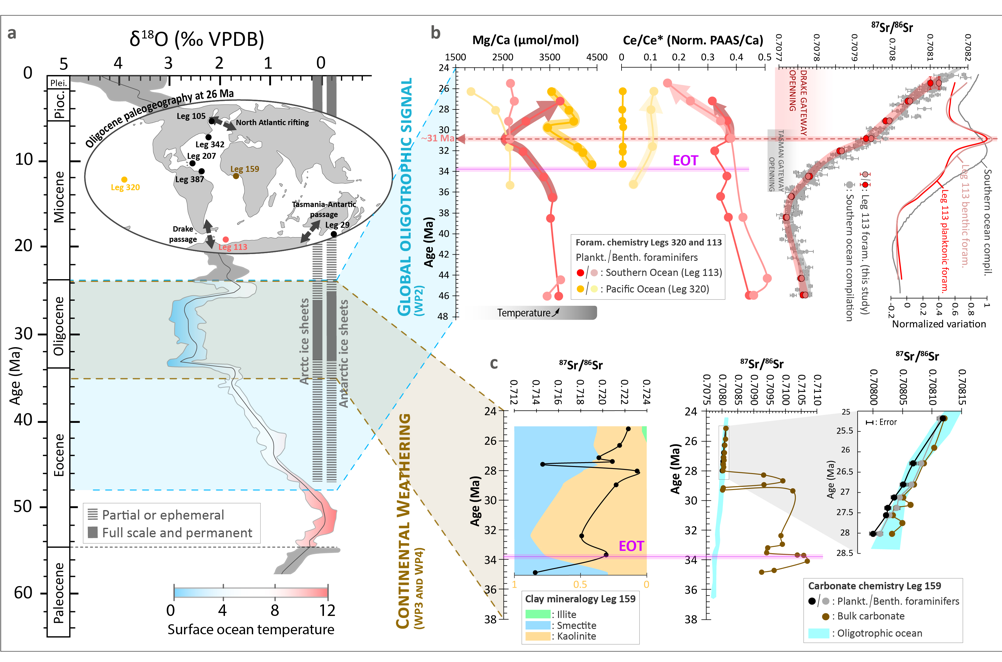Our goal is to extract key information from the oceanic sedimentary record to constrain variations in continental chemical and mechanical erosion rates on geologic time scales. The main constraint is the absence of continental weathering products in the sedimentary record, which gives a partial picture of exports from continental surfaces to the oceans. The scientific community in numerical modeling of climate and weathering cannot include a fundamental parameter, i.e. the dissolved fraction, in the evaluation of past global biogeochemical cycles.

By applying these observations to oceanic deposits, we will be able to trace continental exports in dissolved form, via carbonate organisms of the neritic domain. Combined with the mechanical erosion rates obtained from the analysis of exported clays, it will be possible to quantify the chemical alteration and thus estimate an integrated denudation rate. The site chosen for this exploratory analysis is the African margin of the Equatorial Atlantic at the Eocene-Oligocene transition during which we have quantified in detail the detrital exports of the West African craton (“source to sink” by seismic stratigraphy and geomorphology) thus constituting a unique context for a thorough mineralogical and geochemical study. The TGIR – IODP gives us access to sedimentary archives drilled off the Ivory Coast. We will use, on these samples, the classical geochemical and isotopic tracers (e.g. REEs, Sr, Nd) and develop new ones (e.g. Li and Cr). These elemental and isotopic compositions, characteristic of continental weathering processes, will be combined with drainage basin geometry (Relief & Flow group) and continental sediment exports preserved on the passive margin (Tectonics & Relief group), to constrain continental chemical and detrital exports and associated denudation rates. These results will then be used to constrain numerical models of continental surface processes and/or climate to address our central question “How does climate impact, on geological time scales, the dynamics of erosion and weathering of continental landforms and the exported particulate/dissolved fluxes that modify the composition of the global ocean?
